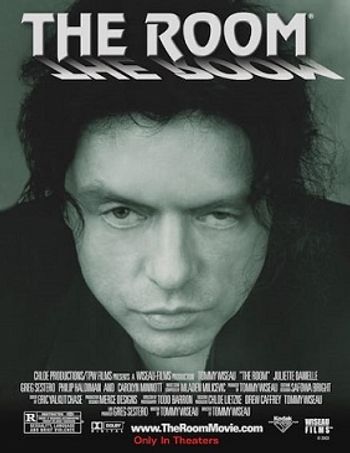
- Vol 31 No 8
- Volume 31
- Issue 8
Comics and Medicine: A Conference…or a Movement?
Until I attended the recent Graphic Medicine conference at Johns Hopkins, I did not appreciate the skyrocketing popularity of “graphic novels” as “illness narratives,” writes this psychiatrist.
In these days of iPhones, Androids, and apps, it is easier than ever to keep current with psychopharmacology. Signing up for e-mail alerts ensures multiple daily electronic updates by journals, listservs, and infomercials. If we click on the links, we come away with the latest data.
Learning about changing trends in culture in general-and how those trends affect treatment-is more challenging, especially when we are busy with patient care. Penn State med students can take courses on comics and medicine, but such cutting-edge courses are usually out of reach for the rest of us.
Until I attended the recent Graphic Medicine conference at Johns Hopkins, I did not appreciate the skyrocketing popularity of “graphic novels” as “illness narratives.” That is in spite of the fact that I reviewed Hillary Chute’s academic book Graphic Women: Life Narrative and Contemporary Comics1 just a few years ago.
On my return, I learned that some of my patients knew more about this topic than I. After hearing that I spent a few days at a comics and medicine conference, an ordinarily taciturn patient with autism spectrum disorder revealed that he enjoyed Japanese manga comics. It was unexpected to see him smile or show such enthusiasm, although I wondered if manga’s many sexually exploitative themes kindled his intrigue. Discussing comics in session seemed like a good way to open closed doors and circumvent his limited communications skills.
A transgendered patient seemed equally thrilled to tell me of her affection for artist/author Alison Bechdel. In one day, I felt confident that I had stumbled upon an unexplored but promising clinical tool. A few mental health–related graphic novels left in the waiting room can accomplish a lot, especially when dwindling appointment times leave less and less time for psychotherapy.
Apparently, The New York Times writers sensed this shift in literary sensibilities a decade ago. In 2004, the magazine section declared comics and graphic novels to be the “major medium of our times.” Five years ago, in 2009, the Times Sunday Book Review added a special section for graphic novels. That section tracks sales of paperback and hardcover graphic novels (previously known as comic books) and manga. As might be expected, Batman-themed books are overrepresented, but illness memoirs surface with regularity and sometimes soar to the top of the list.
In the years since Professor Chute published her anthology and saluted the significance of graphic novels, comic book–style pathographies have attracted larger and larger audiences. (A pathography is a biography that uses pathology-or psychopathology-as its unifying theme.) The successes of artist/authors such as Alison Bechdel and Ellen Forney attest to this shift.
At the Graphic Medicine conference, Forney’s workshop on Marbles: Mania, Depression, Michelangelo, and Me: A Graphic Memoir2 filled every seat in an expansive auditorium. Long lines snaked around her corner of the cafeteria, which housed a Comic-Con–style display of artworks and books. Forney sought treatment for mood swings but fretted that treatment would interrupt her creative career. Copies of her award-winning book sold out while the lines formed. To many people’s surprise, Forney’s light-hearted approach to her bipolar disorder (her “Club Van Gogh”) was more informative than irreverent. Her illustrations of a bespectacled psychiatrist struck a chord.
Alison Bechdel’s work exists on a different plane. Her books are discussed in detail in Hillary Chute’s anthology. Bechdel’s excruciatingly detailed drawings attest to her unremitting obsessive-compulsive disorder, and her work spawned not one, but two, forums by literature professors, each with a different bent. Bechdel’s psychoanalytically informed memoirs illustrate her complicated relationships with her parents. To add authenticity to her imagery, she draws from photographs of herself in drag, posing like her deceased father, who may have died by suicide.
In Are You My Mother?: A Comic Drama3 (a book that appropriates the title of a well-known children’s book), Bechdel shows her mother in a birthing position. In the same panel, Alison crawls away, a fully grown adult who still walks on all fours in her mother’s presence. The visual imagery is potent and expresses more than words alone could convey. The professor-presenter praised Bechdel’s use of Winnicott’s psychoanalytic lore, but some critics pooh-poohed her emphasis on psychoanalysis.
This conference attracted an eclectic crowd, even though its overall thrust was academic. It lived up to its subtitle, “From Private Lives to Public Health.” Counterculture comic book artists shared the stage with the editor of the Annals of Internal Medicine. English literature grad students and tenured professors presented alongside practicing physicians and public health advocates. An attorney-turned-bioethicist explained his college-level course on superheroes and social justice. An emergency department doctor sold self-illustrated toxicology flash cards at the carnivalesque after-conference comics fair. Lydia Gregg, a Johns Hopkins instructor and medical illustrator whose impeccable draftsmanship recalls Albrecht Dürer’s engravings and Vesalius’s anatomical drawings, organized the conference with her trademark attention to detail.
Academics outnumbered artists, and Americans outnumbered Europeans, even though the “movement” began in Britain. Some attendees were public health educators; some were parents. An unaffected family member authored books about siblings with autism. Someone sold books about babies born with familial dysautomia, a lesser-known inheritable neurological disorder. Apparently, their graphic memoirs help families cope with their distress, even if they cannot cure their relatives’ suffering. At the same time, they alert the public to these uncommon illnesses. A man with epilepsy presented a graphic memoir about his own medical problems.
It has been some years since The New York Times reported on the uptick of women’s psychiatric autobiographies, citing Susanna Kaysen’s Girl, Interrupted (1993), Lauren Slater’s Prozac Diary (1998), and Elizabeth Wurtzel’s Prozac Nation: Young and Depressed in America-A Memoir (2001) as examples of that trend.4 Douglas Wolk’s article “At the Panel’s Edge” picked up on that pulse, but without tracing the trajectory from Charlotte Perkins Gilman’s late 19th–century short story, The Yellow Wallpaper (1892), to writers Virginia Woolf and Sylvia Plath, each of whom completed suicide mid-century and became fodder for early feminist studies.
Male authors of psychiatric pathographies seem to be less common, for reasons that deserve a separate study. Some write about someone else’s distress, as seen in Brian Fies’ Mom’s Cancer. Others transmute painful personal experiences into more universal stories, as Art Spiegelman did in Maus (1986), when he launched the contemporary graphic novel movement. Other men embed psychiatric stories in tales about substance abuse-although one female presenter and professor devotes her webcomic to the under-recognized topic of women and alcoholism. In the end, she shifts gears, realizing that her seemingly personal problem is actually a public problem.
Not all of the graphic novels presented concern psychiatry. Many were pure public health, intended to disseminate information to nonliterate or non–English-speaking audiences. Some focused on medical disorders, such as Peaco Todd’s lavishly illustrated comic book about thyroid cancer. Jewel-colored “Peacotoons” remind me of luxurious children’s books at New York City’s Books of Wonder-and exist on a continuum with illuminated manuscripts in museum archives.
Other books elaborated on infectious disease, encephalitis, or diabetes. As expected, the art, life, and death of Harvey Pekar were topics of discussion. Pekar holds special interest for physicians in general, since he worked as a VA ward clerk while creating American Splendor. His comic strip and life story became a 2003 film, and he became an underground cult icon. This conference emphasized his later work, Our Cancer Year (1994), completed in collaboration after he developed cancer and but before he accidentally overdosed on prescribed psychotropic medications.
Pekar borrows the graphic imagery of superhero comics, but his text documents a simple life where nothing monumental happens. His graphic novel mirrors the tradition of 18th and 19th century “genre” paintings that showcase ordinary scenes of everyday life. He inadvertently parodies superhero comics, in that he achieved immortality by depicting uneventful events, ordinary interactions, and daily dialogues. He thus proves that such unglamorous subject matter can be as engrossing as arriving on earth in a spaceship or being bitten by a radioactive spider. Importantly, his life story makes us wonder what other taciturn hospital clerks are up to and suggests that genius may be lurking inside mild-mannered clerks who pass us by, unnoticed.
A John Jay College of Criminal Justice professor introduced audiences to Cyborg, an African American comics character whose scientist parents refuse to let him die a natural death and instead subject him to inhumane experiments. He speaks about comics, but raises questions about palliative care and parental rights, and indirectly recollects Skinner’s so-called Skinner box, used to observe his own daughter. My presentation on Luke Cage Comics and Unethical Medical Experiments addressed another African American superhero, one who began in the 1970s blaxploitation era but whose TV miniseries is currently in production in New York.
Comics created by doctors and nurses to document personal and professional dilemmas that arise during clinical care may hold special interest. Welsh-born physician Ian Williams, who practices in Brighton, opens a window (or “panel,” to use the comics’ term) into the life of a bicycle-riding, self-doubting British GP.5 Doctors in the UK may enjoy more liberties than US doctors do when it comes to self-expression, be it in comics or other media. Still, reading Williams’s work prods clinicians to imagine scenes from our own practices that we wish we could illustrate.
Psychiatrists who want to know what their patients are reading-or to get ideas for themselves-may want to visit the Web site
Disclosures:
Dr Packer is Assistant Clinical Professor of Psychiatry and Behavioral Sciences at the Albert Einstein College of Medicine, Bronx, NY. She is also in private practice in New York City. She reports that she receives royalties for the following books related to comics and psychiatry: Superheroes and Superegos: Analyzing the Minds Behind the Masks (ABC-CLIO; 2010); Cinema's Sinister Psychiatrists: From Caligari to Hannibal (McFarland; 2012); and A History of Evil in Popular Culture: What Hannibal Lecter, Stephen King, and Vampires Reveal About America (ABC-CLIO; 2014).
References:
1. Packer S. Book Review: Graphic Women: Life Narrative and Contemporary Comics by Hillary L. Chute. Metapsychology. 2011;15(34).
2. Forney E. Marbles: Mania, Depression, Michelangelo, and Me: A Graphic Memoir. New York: Gotham Books; 2012.
3. Bechdel A. Are You My Mother?: A Comic Drama. New York: Mariner Books; 2013.
4. Wolk D. At the Panel’s Edge. New York Times Sunday Book Review. December 14, 2012.
5. Williams I. The Bad Doctor. Brighton, UK: Myriad Editions; 2014.
Articles in this issue
about 11 years ago
Mandatory Reporting of Suspected Child Abuseabout 11 years ago
Adult Implications of Childhood Maltreatmentabout 11 years ago
Elder Abuse and Neglect: Appearances Can Be Deceptiveabout 11 years ago
The Role of Psychiatry in Sex Offender Managementabout 11 years ago
Munchausen by Proxy and Factitious Disorder Imposed on Anotherabout 11 years ago
Interventions for Perpetrators of Intimate Partner Violenceabout 11 years ago
Psychiatry on the Edgeabout 11 years ago
Suicidality and Depression Treatments in Youthsabout 11 years ago
Fifty ShrinksNewsletter
Receive trusted psychiatric news, expert analysis, and clinical insights — subscribe today to support your practice and your patients.














